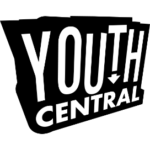On March 27, I had the pleasure of interviewing Gabrielle Cadiang. She is currently pursuing a combined degree at the University of Calgary, studying both political science and communications media studies. Being an avid music lover and contributor to Calgary’s local music scene, she has also been named as one of Calgary’s top 20 under 20.
During this interview, I got to learn so much more about the local music festivals here in Calgary, and gained a much deeper appreciation for the diversity here too.
I really enjoyed learning from her, and I hope you will too! Here’s our Q&A:
- Let’s say we’re making a movie about your life. What’s the title, what genre would it be, and what’s happening right now?
She said that she thought her life as a movie could be classified as a “Romantic Comedy” , but more heavy on the comedy part. She talked about how she had so much going on in her life at the moment, such as a job interview she had that day and just being a university student in general. Although she couldn’t decide on what the title would be, she thought that the first scene opening the movie would be her drinking a matcha (or yellow red bull) and writing in her journal.
2. What’s one thing about you that people wouldn’t expect based on your work?
She said how she observed how when first meeting her, many people thought that she was either a lot older or younger than she actually was. And even though her work is very creative and energetic, she also describes herself as being a very predictable person if you get to know her.
3. If you could have dinner with any musician—dead or alive—who would it be, and why? What would you ask them?
She is not very picky about who she listens to and usually likes listening to a variety of this different music styles. Although there is no musician off the top of her head, she definitely knows what question she would ask. She explained how she would always ask people for life advice and how it doesn’t really matter to her what kind. It could be all the way from how to cook a nice steak dinner all the way to overcoming self depreciation). She really likes understanding why people are the way they are, and sees their answers as ways to get to know them better.
4. Can you tell us what CJSW stands for and what it’s all about – just in case the readers don’t know?
CJSW is a call name for the UofC campus community radio station.
5. You became CJSW’s youngest programmer—how did that happen? Was it intimidating at first?
It turns out that she wasn’t actually the youngest! (even though the “Top 20 under 20” website said so). Gabrielle was part of this organization called “Youth Central”, and in that she was specifically part of the blogging committee. The leader at the time, Emily Donville was one who actually told her about the whole radio station and to check it out! She then started volunteering there (with another motivation to get scholarships in high school) and after show training in 2022 – she got her show in 2023!
6. I believe you used to be part of this thing called Sled Island. It has such an intriguing name, what’s it all about?
Gabrille was curious about the same question and after searching it up, she discovered that Sled Island was actually a place in Northern Alberta, however, she doesn’t think that there is a correlation to that place. She then explained how she learned that the name actually means whatever u want it to mean. Sled Island is an arts and music festival that happens every year at the end of June or so. She really loves this festival and thinks that it’s super cool, and also mentioned how Jack Harlow and more famous performers have performed there!
7. So when you were part of Sled Island, I heard that you helped organize and execute the “All-Ager-Rager” which sounds crazy but super cool at the same time, can you tell us a little bit more about that?
At the time, Sled island had multiple different shows happening at multiple different venues and she wanted to see all of them and all of the different performers there. As a matter of fact, Sled Island is known for being a discovery festival – as in like you go to one of these shows and maybe find an artist there that you like (along with a whole bunch of undiscovered ones in general). One day, she stumbled across an instagram post to apply for board of directors. Although she was 17 at the time and didn’t get the position, one of the board of directors, Arif Ansari, had given her name to Maud Salvi who is the big executive director. Without this little incident, she doesn’t think that she could’ve collaborated with Sled Island in the ways she did. She had the opportunity to work together with a team and help execute the “All Ager Rager”. It was a 1 day event spread across 3 venues city-wide, where many genres of music were playing with an intent to introduce Calgary’s youth to these bands. They also wanted to give these bands a chance to perform to an interested audience. It was almost like a smaller version of the bigger festivals. Gabrielle says how she wishes she knew about Sled Island before as how she used to not know anything about Calgary’s art and music scene.
8. What’s the wildest or most unexpected thing that’s happened at an event you’ve organized or attended?
Gabrielle had two incidents that she wanted to share. The first one being how back in 2023, she had the opportunity to interview some directors for Calgary’s underground film festival. These interviews happened on a Sunday, and the next day she went to the globe cinema as she heard that some films were being played there. On that day, she noticed how people around her had these really cool lanyards, and as she went up to go ask for one – someone recognized her voice! They said how she recognized her voice from the interviews, and that was the very moment when she thought to herself how it was so crazy and mind-blowing how people knew who she was.
The second incident involves jewelry. Last year, she started making these friendship bracelets for Sled Island and even made some for this Hip-Hop R&B trio that was playing that day. The leader of the trio ended up noticing the bracelets, and the trio all wore them throughout the duration of the performance. They even gave her a shoutout! This was one of her favorite bands from all across Canada and she thought this experience was so amazing, which is why she now makes a lot more friendship bracelets to give to those in the music scene.
9. If you could book any artist for an all-ages show in Calgary, who would it be and why?
Gabrille says how she listens to a LOT of music. However, she narrowed it down to: Japanese Breakfast (who actually played at sled island a couple years ago), Charli XCX (but feels like a lot of these youth would not want to listen to her), Mac Demarco, and Phoebe Bridgers.
10. So I heard you were part of something called, “Reverie”. Can you tell us more about what that is and how you contributed to it?
Reverie was a music blog/ music magazine that she co-founded with her friend a while ago. Even to this day, it is up and running and have recently just released their 3rd issue. The main focus of this was showcasing Canadian artists and music, and just the underground local artists that aren’t as popular. It started out as an “online-music news-blog situation”, but it later morphed into a print-publication during Sled Island last year. After getting busier with university, she stepped out of it – but still does some reviews and interviews. Reverie is kind of like YAA in a way – but for music and if it was a print-version.
11. What’s something about Calgary’s music scene that people from outside the city wouldn’t understand? What makes Calgary’s music scene so unique?
Gabrielle says how there is just so much to discover music wise. There are many different bands and genres and how there is always something for everyone in each and every part of Calgary’s music scene. She said how there is so much cool stuff happening around the city and how there is so much cool and unique stuff happening around the city, and wishes that she could make it all to be more accessible to youth.
12. You’ve made a big impact on Calgary’s music scene which leads me to ask you, “What would you say has been your driving force behind everything you do?”
The main driving force behind all of her work in the music scene has been driven by raw passion for music in general. Back when she was in grade 8 or grade 9, she wanted to become a journalist and was driven by the idea of how she didn’t want to get stuck doing what she didn’t want to do. She wanted to be happy and decided to turn her love for music and her amazing CJSW experience to dive deeper into her passion. As a matter of fact, she has always been an arts person, liking subjects like english back in high school rather than math which showcases this.
13. If you could host an ideal event or festival, with absolutely no limitations, what would it look like from start to finish?
Gabrielle explained how she would connect her Spotify account and just go off whatever artist(s) and/or song(s) she happens to be listening to the most. Some examples she gave me were “Witching hour”, “Sore Throat”, “True Blue Interlude”. Although I haven’t listened to these songs, the names sound super interesting – which probably means that the event would be exciting and interesting too!
14. If someone wants to support Calgary’s music scene, what’s one simple thing they can do today?
The main idea she gave was to go to shows because it’s one of the best ways to get exposed to Calgary’s music scene. She explained about buying merch from local artists and just talking about and spreading recommendations about these songs. She believes (and I believe too) that just showing up and listening to Calgary’s local bands (and just the overall music scene) is one of the easiest ways to show support.
Acknowledgement
I’d like to thank Ms. Cadiang for giving me this lovely interview opportunity. I hope you enjoyed!



































